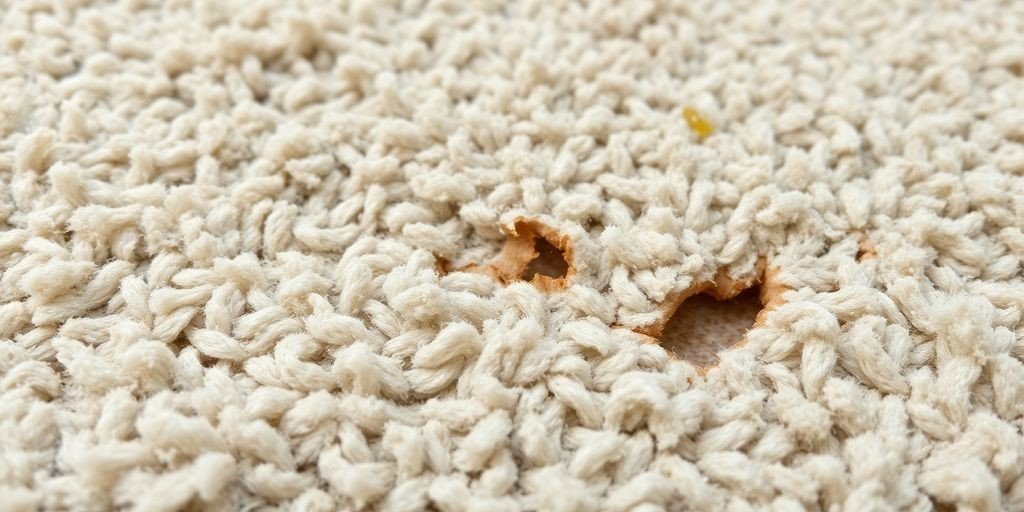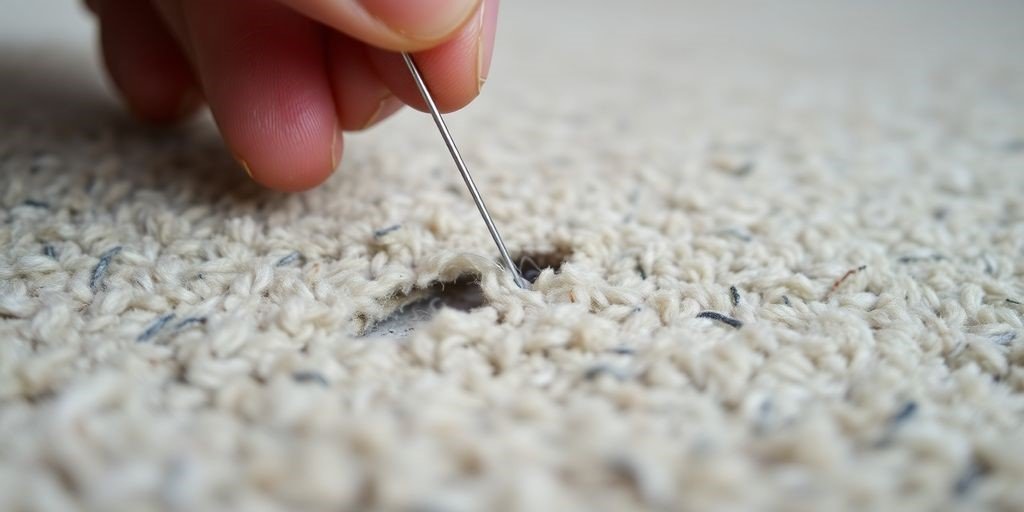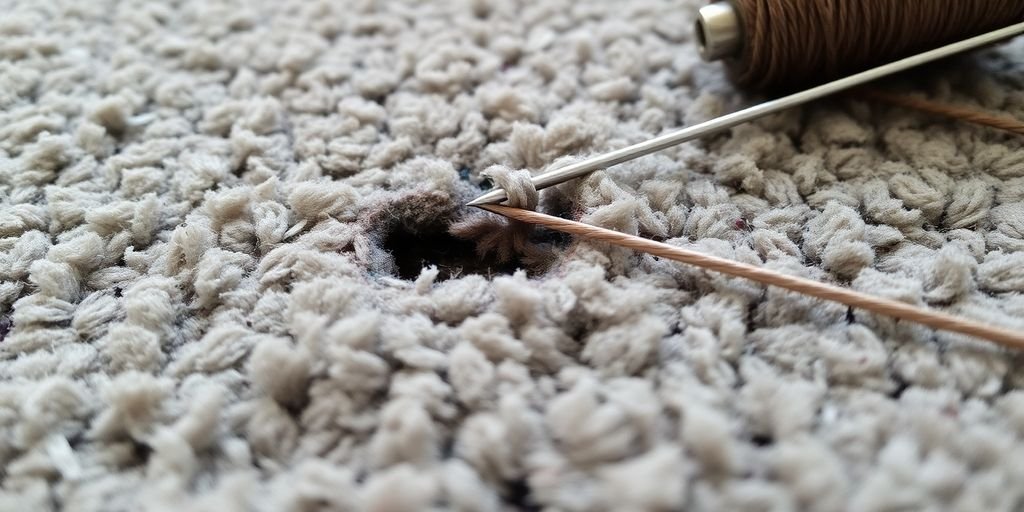Dealing with worn-out carpets in your Denver home can be a real headache. You know, that favorite rug that’s seen better days or that spot in the hallway that just won’t come clean? It’s easy to just want to toss it all and start fresh, but sometimes, a good old-fashioned repair is all you need.
This guide is all about figuring out when to call in the pros for some carpet repair in Denver, whether it’s a small snag or a bigger issue.
Key Takeaways
- Understand the common types of carpet damage like stains, rips, fraying, and burns that happen in Denver homes.
- Learn when simple fixes like stitching are enough for minor wear and tear.
- Discover how patching can bring larger damaged areas back to life.
- Know the signs that indicate your carpet is beyond repair and needs a full replacement.
- Get tips on choosing the right carpet repair service in Denver and decide if DIY or professional help is the best route for your situation.
Understanding Common Carpet Damage in Denver Homes

Living in Denver means dealing with a unique set of environmental factors that can take a toll on your carpets. From the dry air and intense sun to the occasional dust storm, your carpets are constantly under assault.
Understanding the common types of damage can help you identify when it’s time to call in the pros for local carpet damage solutions in Denver.
Stains and Discoloration
These are probably the most common carpet complaints. Spills happen, whether it’s a dropped glass of red wine, muddy paw prints from a hike in the foothills, or a leaky coffee mug. Denver’s dry climate can sometimes set stains faster, making them harder to remove.
Sunlight, especially through large windows common in Denver homes, can also cause fading over time, leading to uneven color.
Rips, Tears, and Seam Separation
Heavy foot traffic, furniture being dragged, or even pets can cause carpets to rip or tear. Seams where two pieces of carpet meet can also start to pull apart, creating an unsightly gap. This is particularly common in high-traffic areas like hallways or living rooms.
Fraying and Snagging
This often happens with looped carpets. A stray thread can get pulled, leading to a snag. If this snag isn’t addressed, it can unravel, causing a noticeable fray along the carpet’s surface. Pets, especially cats, are notorious for snagging carpets with their claws.
Burns and Melted Fibers
Accidents with cigarettes, candles, or even hot items dropped from a stove can cause burns. The heat melts the carpet fibers, leaving a hard, discolored spot that’s often brittle. These are tough to fix and can be quite noticeable.
When to Stitch: Minor Carpet Repairs

Sometimes, a small snag or a minor fray doesn’t mean your carpet is a lost cause. For those little issues, stitching can be your best friend.
Think of it like a quick stitch on a favorite shirt – it can save something you love from getting worse.
When you see a loose thread that’s starting to unravel, or a small snag from a pet’s claw, stitching is often the go-to solution. It’s about catching the problem early before it spreads. If a seam is just starting to pull apart, a few careful stitches can hold it together nicely.
This kind of repair is usually pretty straightforward and doesn’t require a whole lot of fancy equipment.
Here’s a quick rundown of what stitching can fix:
- Loose threads: Those little bits that stick up and beg to be pulled.
- Minor snags: Small pulls in the carpet fibers.
- Seam separation: When the edges of two carpet pieces are just beginning to come apart.
- Small frays: Edges that are just starting to look a bit fuzzy.
When to Patch: Addressing Larger Damaged Areas
Sometimes, a small snag or a minor stain just isn’t the whole story. You might have a larger area of your carpet that’s seen better days, maybe from heavy foot traffic, a significant spill that spread, or even an accident with a pet.
When the damage is more than just a surface issue, patching becomes the go-to solution. It’s a way to save a carpet that’s otherwise in good shape but has a noticeable problem spot.
The Patching Process Explained
Carpet patching is a bit like a skilled tailor mending a favorite coat, but for your floors. It involves carefully removing the damaged section of your carpet and replacing it with a new piece of matching carpet.
This new piece is usually taken from a remnant or an inconspicuous area of the existing carpet, like inside a closet, to ensure a perfect color and texture match. The goal is to make the repair virtually invisible.
Here’s a general idea of how it works:
- Assessment: A professional will first look at the damaged area and the carpet you have available for the patch. They’ll check the pile direction and pattern to make sure the new piece blends in.
- Removal: The damaged carpet section is cut out precisely. This is done carefully to avoid damaging the surrounding carpet fibers or the carpet backing.
- Preparation: A new piece of carpet, cut to the exact size and shape of the removed section, is prepared. It’s important that the pile direction of the patch matches the rest of the carpet.
- Installation: The new carpet piece is then fitted into the gap. It’s secured using a special adhesive or seam tape, and the edges are carefully joined.
- Finishing: Once the adhesive sets, the area is groomed. The fibers are brushed to blend the patch with the surrounding carpet, making the repair look as natural as possible.
When to Replace: When Repair Isn’t Enough
Sometimes, even the best repair efforts just won’t cut it. When your carpet has seen better days and the damage is too extensive, it’s time to consider a full replacement. It’s a bigger decision, for sure, but often the most practical solution in the long run.
Signs Your Carpet Needs Full Replacement
It’s not always obvious when a carpet has reached the end of its road. Here are some common indicators that suggest it’s time to start shopping for new flooring:
- Widespread Wear and Tear: If large sections of your carpet are matted down, faded, or showing significant wear patterns, especially in high-traffic areas like hallways or living rooms, repairs might only be a temporary fix.
- Extensive Staining or Discoloration: While spot cleaning can handle minor spills, if your carpet has suffered from multiple large stains, pet accidents that have soaked into the padding, or overall discoloration from sun damage or improper cleaning, it’s unlikely to ever look truly clean again.
- Severe Damage from Water or Fire: If your carpet has been exposed to significant water damage, leading to mold or mildew, or has been affected by fire or smoke, the structural integrity and safety of the carpet are compromised.
- Old Age and Deterioration: Carpets don’t last forever. Depending on the material and quality, most carpets have a lifespan of 5-15 years. If your carpet is old, brittle, and the backing is starting to break down, it’s likely time for a replacement.
- Multiple, Recurring Issues: If you find yourself constantly calling for repairs for different spots, seams, or stains, the cumulative cost and effort might outweigh the benefit.
Deciding to replace your carpet is a significant investment. It’s worth weighing the cost of repeated repairs against the price of new carpeting. Sometimes, a fresh start with new flooring is the most cost-effective and aesthetically pleasing option.
Choosing a Professional Carpet Repair Service in Denver
When you’ve got carpet damage that’s more than just a simple spot clean, it’s time to think about bringing in the pros. Finding the right Denver carpet fixing service can make all the difference. You want someone who knows their stuff, whether it’s carpet patching and stretching denver or more specific tasks like carpet seam repair in Denver.
Look for a professional carpet mending Denver company that has a good track record. Ask around, check online reviews, and see what people are saying about their experience with local carpet restoration Denver businesses.
It’s also smart to get a few quotes to compare the cost of carpet repair in Denver. This way, you can get a feel for the going rates and what to expect for services like carpet patching and stretching in Denver or even carpet burn removal in Denver.
Here are a few things to consider when choosing a service:
- Experience: How long have they been doing carpet seam repair in Denver?
- Services Offered: Do they handle everything from fixing rips to more complex carpet patching and stretching in Denver?
- Customer Reviews: What do past clients say about their professional carpet fixing Denver work?
- Pricing: Is the cost of carpet repair in Denver transparent and fair?
Don’t be afraid to ask questions. A good company will be happy to explain its process and give you a clear idea of what to expect, especially when it comes to the cost of carpet repair in Denver.
Ultimately, you want a Denver carpet patching services provider you can trust to get the job done right, leaving your carpets looking their best.
DIY vs. Professional Carpet Repair: Making the Right Choice
Deciding whether to tackle a carpet repair yourself or call in the pros is a big choice. It really depends on what’s wrong with your carpet and what tools and patience you have on hand.
For really small issues, like a loose thread or a tiny snag, a DIY approach might be totally fine. You can often find kits at craft stores or online that have the basic tools you need.
However, when things get more complicated, like a significant tear, a large stain that won’t budge, or damage from a pet, it’s usually best to get a professional involved.
They have specialized equipment and cleaning solutions that can handle tough jobs without making things worse. Plus, they know how to match colors and textures, which is super important if you need a patch.
Think about it this way:
- Minor Snags/Loose Threads: Often manageable with tweezers or a small scissors.
- Small Stains: Spot cleaning with the right product might work, but test it first in an hidden spot.
- Rips/Tears (over an inch): Professional help is usually needed to prevent further unraveling.
- Large Stains/Discoloration: Professionals have stronger, specialized cleaners.
- Burns/Melted Fibers: These are tricky and often require professional patching or replacement.
Trying to save a few bucks by doing a DIY repair that goes wrong can end up costing you more in the long run. Professionals have the right tools and know-how to get it done right the first time.
Wrapping Up Your Carpet Care
So, when you look at your carpet and see a snag, a stain, or just general wear, don’t panic. Think about what you’ve learned here. A small tear might just need a quick stitch, while a worn-out patch could be replaced.
At A1 Red Carpet, we specialize in expert carpet repair in Denver, restoring beauty and safety to your floors. Our skilled team fixes ripples, holes, and loose seams with seamless results, extending your carpet’s life. Whether it’s a small patch or full re-stretching, we work efficiently and carefully.
Contact us right now for professional carpet repair services in Denver.
Frequently Asked Questions
When is it time to stitch my carpet?
You might need to stitch your carpet if you notice small rips, unraveling threads along the edges, or seams that are starting to come apart. These are usually minor issues that can be fixed without replacing the whole carpet.
What kind of damage can be fixed with patching?
Patching is a good idea for larger damaged areas, like burns from dropped cigarettes or significant tears that stitching can’t handle. A patch involves cutting out the damaged section and replacing it with a similar piece of carpet, often taken from a less visible area like a closet.
How do I know if my carpet needs to be replaced entirely?
If your carpet has widespread staining that won’t come out, severe matting, or damage from pets that has gone too deep, it might be time for a replacement. Also, if the carpet is very old and worn out everywhere, replacing it is usually the best option.
What are the most common carpet problems in Denver?
Common carpet problems in Denver homes include pet stains and odors, general wear and tear from foot traffic, and sometimes damage from spills or dropped items. Denver’s dry climate can also sometimes lead to static, which can attract dirt.
Can I fix carpet damage myself, or should I hire someone?
For small issues like a single stain or a minor fray, you might be able to fix it yourself. However, for larger tears, seam repairs, or patching, it’s usually best to hire a professional. They have the right tools and expertise to make the repair look seamless.
What should I look for in a carpet repair company?
When choosing a carpet repair service in Denver, look for companies with good reviews, experienced technicians, and clear pricing. It’s also helpful if they offer a guarantee on their work. Asking for references or checking their past projects can give you peace of mind.

